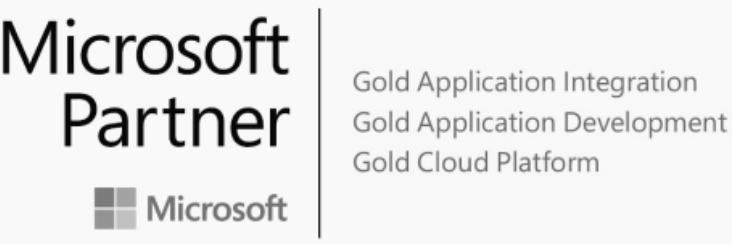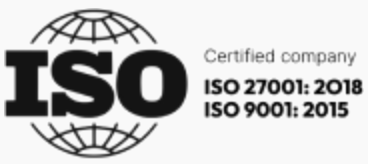We’re no strangers to MVP (minimum viable product) development at RebelDot. We love how the framework simplifies product strategy and helps us build better products with long-term success. So, naturally, we’re keen to see how MVP development will evolve over the next year.
This post will look at the state of MVP development as we head into 2023, including what it means to perform MVP development today, our top tips for success, and how we expect to see it evolve in the future.
What is an MVP?
Teams looking to make an impact with their new product should look to test every possible aspect to ensure it solves the problem it’s designed to address. This is why so many companies use Minimum Viable Product (MVP) development.
As the name suggests, MVP development revolves around building the minimum viable product. This is a loose version of your final product, including the minimum number of vital features to make it functional.
The MVP will form the foundation of your final product. Developers will work iteratively to flesh out the product from its MVP form, collecting user feedback at every step.
You can think of the MVP as an advanced prototype. It’s not ready for release, but it’s enough to give users a solid idea of what the product will do. Some even think of MVP development as an experiment that aims to validate business hypotheses. It can help teams understand an idea’s viability by testing assumptions and identifying potential business opportunities.
Some famous MVP examples
MVP development is a popular framework in various industries. Let’s take a look at some of the best companies that have used MVP development.
Dropbox
Dropbox is an extremely interesting example of MVP Development. Rather than building the actual product, Dropbox co-founder created a video demonstration of how he wanted the technology to work.
This video was sent to key high-tech early adopters and led to over 75,000 people looking for a beta invite. In this situation, the video was actually the platform’s MVP. By releasing it, the company was able to test its hypothesis that people wanted a simple file-sharing system, and the thousands of signups quickly validated that hypothesis.
By now, we all know the story of how Facebook (now under the Meta umbrella) came to be the tech juggernaut it is today. Facebook’s humble beginning as an internal network used for connecting students at Harvard University provided the perfect MVP for the platform it is today. “Thefacebook” — as it was called at the time — was a simple platform that connected students from the same classes by allowing them to post messages to shared boards.
As word spread about the new platform, more and more people outside of Harvard wanted to get involved. This validated the hypothesis that people needed a simple way to connect with others through the internet and triggered its rapid expansion into the billion-dollar company it is today.
N26
The FinTech industry is full of great examples of MVP development, including Berlin’s N26 bank. Since their launch in 2015, N26 has expanded into a fully-licensed bank which operates across 17 countries in Europe, with over 300,000 customers.
This might be surprising to many readers since creating a fintech MVP isn’t quite as simple, thanks to various regulations and requirements. In a great interview, N26 founder Valentin Stalf compared their MVP efforts to eCommerce stores. He stated that “[in FinTech] by the time you’re ready to launch your product, it is by definition no longer an MVP” due to the amount of regulatory work that needs to happen.
To avoid this, N26 partnered with an established bank to test their hypothesis that people wanted an easier way to interact with their bank. This partnership was a fantastic way to deliver an MVP, leading to the company obtaining its own banking license to become an independent bank.
RebelDot’s dos and don’ts of MVP development
Not to toot our own horn, but we’re kinda the experts on MVP development at RebelDot. We’ve helped lots of businesses launch MVPs, and we’ve learned a few tricks to get MVP development right. Let’s dive into what you should be doing and what you should avoid when creating a minimum viable product.
Do:
- Do research your target market and your target customer’s needs. This will ensure you choose the right features for your MVP.
- Do prioritize to build what users need. MVPs need to be rigorously tested by users, but you won’t even get to the testing stage if you don’t include the features users want.
- Do align your idea with business goals and objectives. Each product you make should reflect the overall vision of your company.
- Do keep an eye on your competitors. Learn what they’re doing and see how you can do it better to attract more users.
Don’t:
- Don’t forget about feedback. Your MVP isn’t supposed to be a final product. You should communicate with users and stakeholders and collect regular feedback to help shape the product as it evolves.
- Don’t aim for perfection. MVPs are a rough draft of a final product. So, you shouldn’t aim for perfection but try to create a proof of concept — you can perfect your vision later.
- Don’t abandon an MVP that fails. The whole idea of an MVP is to test your theories. If the initial MVP fails, you can salvage features that worked well and build them into the next iteration.
- Don’t go it alone. This is especially true for startups. Building an MVP can be confusing as you try to figure out what should you should build. Having a helping hand from MVP experts can help you make your MVP development a breeze.
How much does it cost to develop an MVP right now?
Many variables are involved in developing an MVP, so there isn’t a set answer to this question. It all depends on your industry, the type of application you’re building, the tech stack you’re using, the country you’re in, and so on.
Variables that decide the final price of the MVP include:
- In-house vs. outsourced development
- Type of application
- The features you want to include
- The complexity of your design
- The tech stack used to develop the app
- Any post-launch costs, including marketing, sales, and maintenance
RebelDot’s predictions for MVPs in 2023:
With the ever-increasing list of emerging technologies coming to market, we expect MVP development to become even more popular in 2023. As businesses focus on new tech, there will be a heightened focus on cloud services and IoT to offer maximum value to their customers.
With so much new tech entering the market, we’re seeing a greater focus on cybersecurity, with blockchain leading the charge. We’re already seeing blockchain MVP applications hit the market and expect many more over the next year.
MVP development with RebelDot
If you’re looking to give life to a new idea and don’t know where to start or simply need a helping hand creating your MVP, RebelDot is here for you.
Contact us to get started building your minimum viable product!


